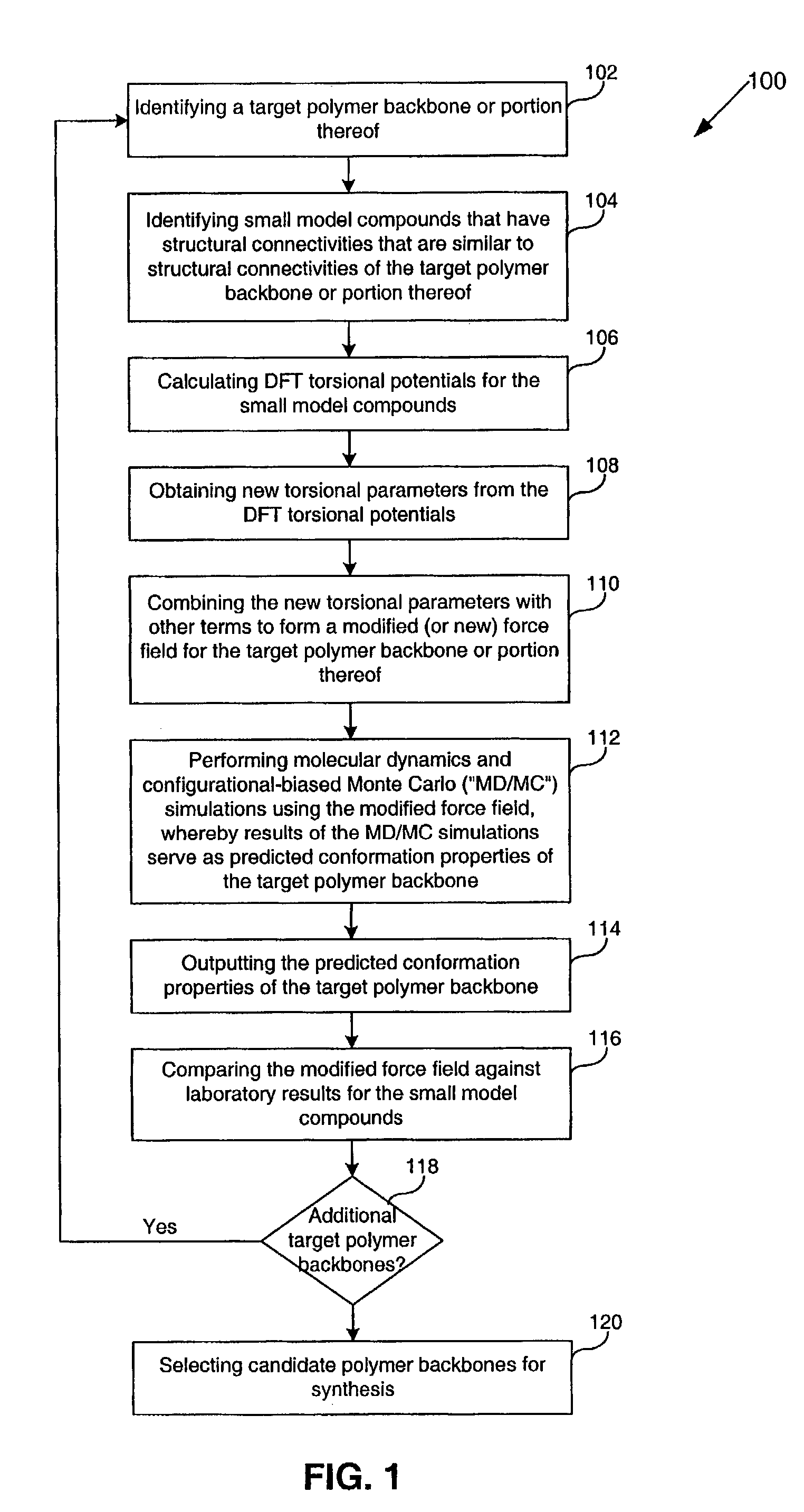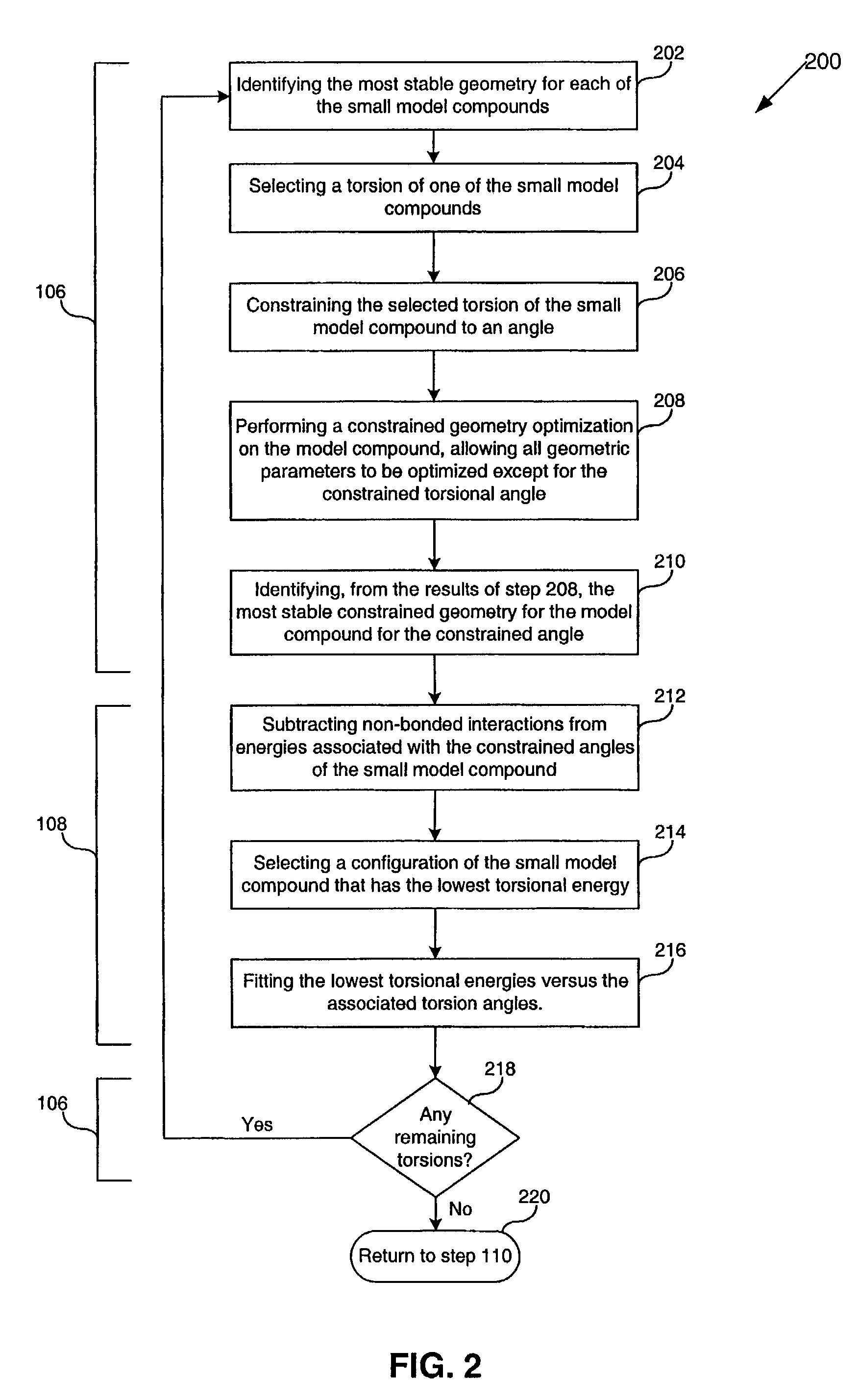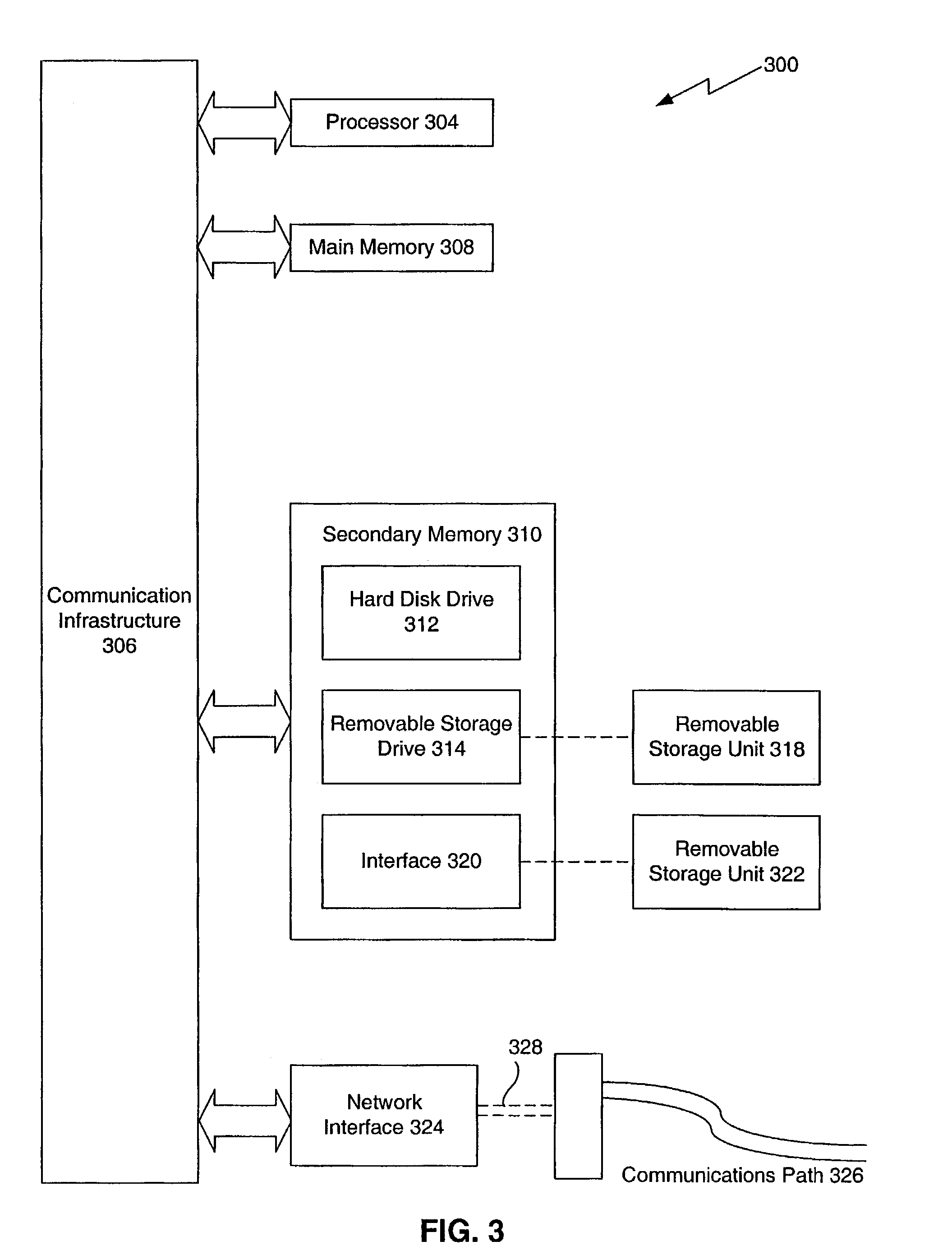Methods, systems, and computer program products for computational analysis and design of amphiphilic polymers
a technology of amphiphilic polymers and computer program products, applied in the field of computational molecular design, can solve the problems that conventional computational molecular design approaches do not provide, among other features, adequate torsional parameters
- Summary
- Abstract
- Description
- Claims
- Application Information
AI Technical Summary
Benefits of technology
Problems solved by technology
Method used
Image
Examples
Embodiment Construction
I. Introduction
[0024]The present invention is directed to methods, systems, and computer program products for computational polymer processing including, without limitation, computational amphiphilic polymer design, conformational energy minimization, generation and refinement of torsional parameters for sub-units of potential polymers, generation of modified force field parameters, and prediction of conformational information for potential polymers.
[0025]The present invention is further directed to computational methods for designing polymers that adopt well-defined secondary structures. The present invention is useful for, among other things, designing and analyzing a variety of antimicrobial polymers that are simpler in structure and hence less expensive to produce than either alpha- or beta-peptides. In accordance with the present invention, amphiphilic polymers are designed based on aryl and alkyl amide, ester, aryl hydrazide, aryl oxalamide, and urea backbones.
[0026]The presen...
PUM
| Property | Measurement | Unit |
|---|---|---|
| gradient-corrected density functional theory | aaaaa | aaaaa |
| DFT | aaaaa | aaaaa |
| torsional potentials | aaaaa | aaaaa |
Abstract
Description
Claims
Application Information
 Login to View More
Login to View More - R&D
- Intellectual Property
- Life Sciences
- Materials
- Tech Scout
- Unparalleled Data Quality
- Higher Quality Content
- 60% Fewer Hallucinations
Browse by: Latest US Patents, China's latest patents, Technical Efficacy Thesaurus, Application Domain, Technology Topic, Popular Technical Reports.
© 2025 PatSnap. All rights reserved.Legal|Privacy policy|Modern Slavery Act Transparency Statement|Sitemap|About US| Contact US: help@patsnap.com



